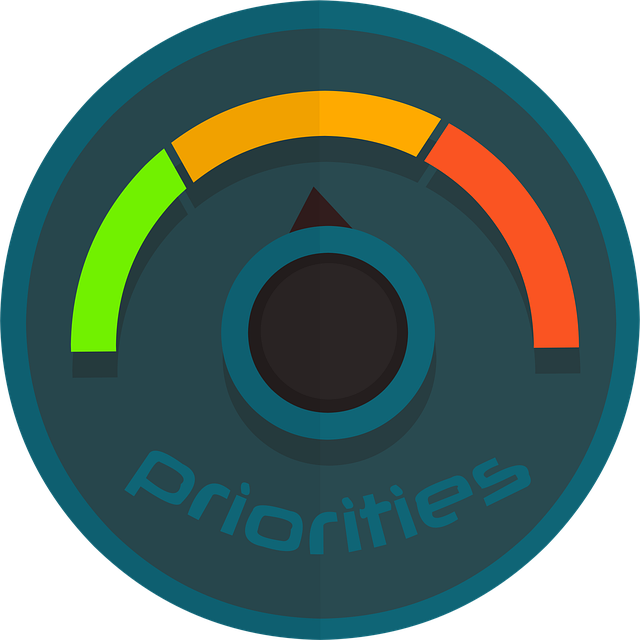Optimizing fleet size with Select Fleet Management involves understanding unique business needs and demand patterns. This includes analyzing peak hours, seasonal fluctuations, and geographic distribution to select efficient management strategies. Route optimization software reduces idle time, lowers fuel consumption, and enhances productivity. Regular reviews are key to adapting to dynamic demand, especially in delivery services. Assessing operational costs and benefits is crucial, considering direct expenses like fuel, maintenance, and salaries, as well as indirect costs such as administrative overheads and fines. Benefits include improved delivery times, reduced mileage, and enhanced safety.
Vehicle utilization rates are tracked using telematics and effective maintenance management for data-driven decisions. High utilization indicates efficient deployment, while low rates suggest underutilized assets. Integrating fleet management software enables real-time monitoring, facilitating resource allocation and identifying improvement areas. Select Fleet Management prioritizes environmental impact through practices like reducing idle time and using electric/hybrid vehicles. Regulatory compliance is ensured through up-to-date knowledge and rigorous maintenance.
Advanced data analytics are key for optimizing fleet size based on performance metrics, historical trends, and hidden patterns. Continuous evaluation and adaptation are necessary to maintain efficiency. Implementing a robust fleet management system with real-time tracking enables strategic decisions. On-demand fleet deployment aligns fleet size with demand, minimizing idle time and reducing costs, leading to improved productivity and responsiveness.
Optimizing fleet size is a strategic move for any business aiming for maximum efficiency. This comprehensive guide explores proven strategies through which effective fleet management can be achieved. From understanding fluctuating demand patterns to regularly reviewing fleet composition, these steps ensure your operations are not just efficient but also sustainable. By assessing operational costs, analyzing utilization rates, factoring in environmental regulations, and leveraging data-driven insights, you can make informed decisions that select the right fleet size for your business’s needs.
- Understand Business Needs and Demand Patterns
- Assess Operational Costs and Benefits
- Analyze Vehicle Utilization Rates
- Factor in Environmental Impact and Regulations
- Implement Data-Driven Decision Making
- Regularly Review and Adjust Fleet Composition
Understand Business Needs and Demand Patterns

Understanding your business needs and demand patterns is a critical step in optimizing your fleet size for maximum efficiency. Before diving into fleet management solutions like alt fuel fleet solutions or implementing cost-effective fleet operations strategies, it’s essential to analyze your specific requirements. This includes evaluating peak hours, seasonal fluctuations, and the geographic distribution of your operations. For instance, if you’re in an industry with high demand during off-peak hours, such as delivery services, a flexible fleet model that can adapt to these variations may be more suitable.
Utilizing route optimization software is key to ensuring efficient trips and minimizing idle time. By considering factors like traffic patterns, vehicle capacity, and multiple destinations, this technology helps in planning the most logical and time-saving routes. This not only reduces fuel consumption but also enhances overall fleet productivity. Given the dynamic nature of demand, regularly reviewing and updating these plans is crucial to maintain maximum efficiency.
Assess Operational Costs and Benefits

Assessing operational costs and benefits is a crucial step in optimizing fleet size for maximum efficiency. Before making any decisions, it’s essential to evaluate both the direct and indirect expenses associated with your fleet operations. Direct costs include fuel consumption, vehicle maintenance, and driver salaries. Indirect costs may encompass administrative overheads, insurance, and potential environmental fines. On the benefits side, consider improved delivery times, reduced mileage, and enhanced safety measures that come with a well-managed fleet. By leveraging commercial vehicle telematics and implementing effective vehicle maintenance management strategies, you can gain valuable insights into your operations, enabling data-driven decisions to achieve cost-effective fleet operations.
Analyze Vehicle Utilization Rates

Analyzing vehicle utilization rates is a key step in optimizing your fleet size for maximum efficiency. By understanding how often and how long each vehicle is used, you can make informed decisions about whether to expand or reduce your fleet. High utilization rates indicate that vehicles are efficiently deployed, while low rates may signal underutilized assets. This data, when combined with insights from flot management technology and vehicle maintenance management systems, offers a comprehensive view of your operational needs.
Leveraging car fleet management software allows you to track these utilization metrics in real-time. This enables better resource allocation and helps identify areas for improvement. For instance, if certain vehicles are infrequently used, downsizing those segments could lead to cost savings without compromising service levels. Conversely, identifying underutilized assets can highlight opportunities to redistribute vehicles for more productive uses within your fleet management strategy.
Factor in Environmental Impact and Regulations

When optimizing a fleet for maximum efficiency, it’s crucial to consider more than just fuel consumption and cost savings. The environmental impact of your fleet is an increasingly important factor that can’t be overlooked. Select Fleet Management recognizes this, integrating eco-conscious practices into its comprehensive services. By implementing strategies like reducing idle time and utilizing electric or hybrid vehicles, companies can lower their carbon footprint while still maintaining high levels of operational efficiency.
Regulatory compliance is another critical aspect. Environmental laws and emissions standards vary by region, and non-compliance can result in hefty fines. Efficient fleet management involves staying up-to-date with these regulations and ensuring your vehicles meet the necessary standards. This includes regular maintenance, as proper vehicle care not only prolongs their lifespan but also reduces pollution. Incorporating real-time traffic alerts into fleet safety programs further contributes to sustainability by optimizing routes, minimizing congestion, and lowering fuel consumption.
Implement Data-Driven Decision Making

In today’s digital era, advanced data analytics play a pivotal role in optimizing fleet size for maximum efficiency. By implementing data-driven decision making, select fleet management practices can uncover valuable insights hidden within vast amounts of transportation risk management data. This involves tracking real-time performance metrics, analyzing historical trends, and identifying patterns that might not be immediately apparent to the naked eye. Such insights enable businesses to make informed choices about their light duty fleet management, ensuring every vehicle addition or removal is strategic and aligned with operational goals.
For instance, leveraging fleet insurance coverage data can help identify high-risk areas or vehicles that require more attention. This information can guide decisions on maintenance schedules, driver training, and even the replacement of older, less efficient models. As a result, businesses can streamline their operations, reduce costs associated with transportation risk management, and ultimately enhance overall fleet performance.
Regularly Review and Adjust Fleet Composition

Maintaining an efficient fleet involves a continuous process of evaluation and adaptation. Regularly reviewing and adjusting your fleet composition is a strategic step in optimizing operations for maximum efficiency. As business needs evolve, so should your fleet. This could mean updating vehicle types to accommodate new demands or downsizing to reduce costs while ensuring adequate coverage. A robust fleet management system, equipped with real-time vehicle location tracking, allows for data-driven decisions, making it easier to identify underutilized assets and plan necessary changes.
Moreover, adopting on-demand fleet deployment practices can further enhance efficiency. By aligning fleet size with actual demand, businesses can minimize idle time and reduce overall operational costs. This dynamic approach ensures that resources are allocated effectively, contributing to improved productivity and a leaner, more responsive organization.
Optimizing fleet size is a strategic process that requires a holistic approach, encompassing various factors. By understanding business needs, assessing operational costs and benefits, analyzing vehicle utilization rates, considering environmental impacts, and implementing data-driven decision making, organizations can make informed choices. Regular reviews and adjustments ensure fleet composition aligns with current demands. Employing these strategies through effective Select Fleet Management practices leads to enhanced efficiency, reduced costs, and a more sustainable operation.
